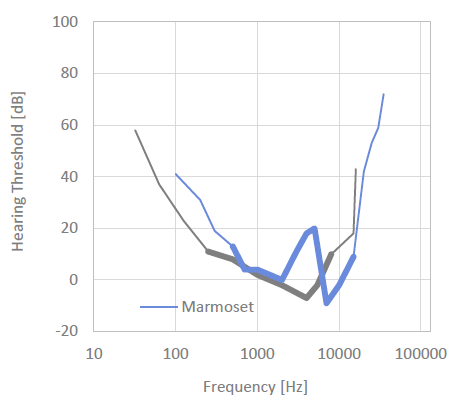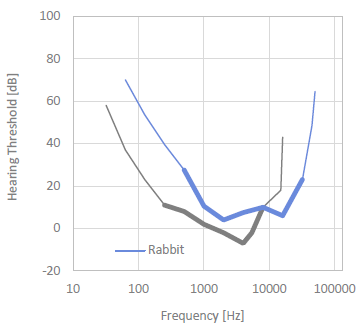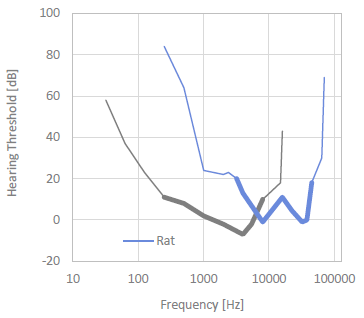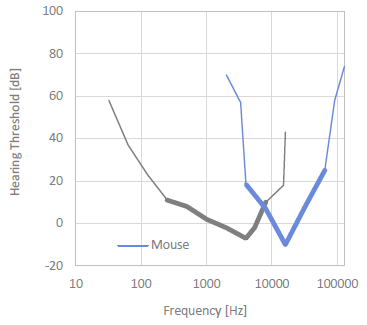Audiograms for a few mammals
A few years ago, I proposed a simple "exchange rate" way to think about the differences between rodent and human hearing. A lot of people liked the audiograms from that plot, so I figured I would share a few more. So: here are the audiograms for four different mammals that might be of interest.
In practice, exact species vary, and transgenics with slightly different hearing might exist. These data may be taken as representative for rabbits, rats, mice, and small primates. The most-sensitive regime is highlighted for each animal as the dark part of the curve. The human audiogram (from an ISO standard) is overlaid in grey for comparison.
In general: it's no surprise that there is a general bias towards higher-frequency sensitivities in animals. That's why we often have to measure (and speak) in terms of ultrasound when it comes to animals. A general rule of thumb holds that for mammals, frequency is inversely-proportional to size.
That proportionality doesn’t quite hold for other animal classes. For example, bird hearing ranges exhibit significant overlap with the human hearing range. That is to say, while rodent hearing is biased towards high frequencies when compared to humans, this is less true for avian species.
We adapted these from Rickye Heffner's fantastic archive (find it at the Internet Archive) many years ago; a publications search may turn up more-recent data.





